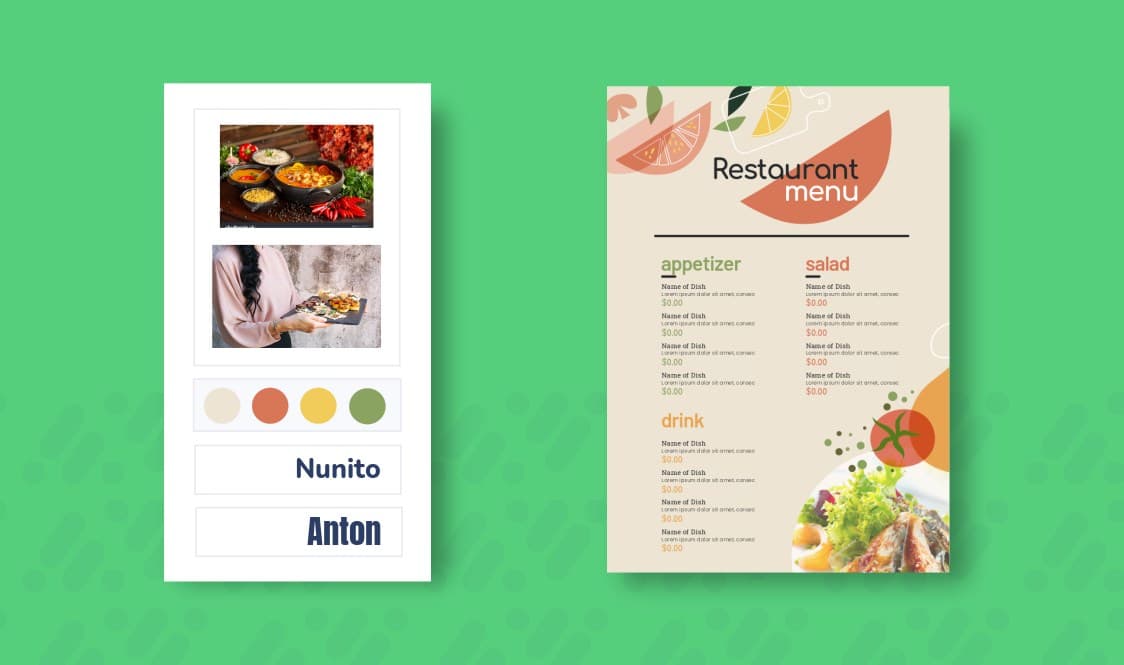How to manage my restaurant menu online
Managing your restaurant menu online is one of the most effective ways to save time, cut printing costs, and keep guests up to date with accurate information. Instead of reprinting menus every time you change a price, add a seasonal dish, or update an allergen, you can edit your digital menu once and see the change everywhere. The pillar guide “Digital restaurant menus and QR codes” explains the overall concept, while this article focuses on the practical steps of daily online menu management and connects naturally to the detailed guide “Convert PDF restaurant menu to online menu”.
Your first goal is to have a single master version of your menu. This master lives in your digital menu system and feeds every other channel: QR codes, website, social media links, table ordering and even future integrations with delivery platforms. When everything reads from the same database, you avoid the chaos of multiple PDFs, screenshots or outdated photos floating around online.
If your menu currently exists as a PDF, the guide Convert PDF restaurant menu to online menu is your starting point. You import your existing layout once and then maintain it in a structured digital format. From that moment on, you stop editing documents and start managing live data.
A clean structure makes your menu easier to manage and easier for guests to browse. Start by defining categories such as:
Starters
Main Courses
Desserts
Soft Drinks
Cocktails
Kids Menu
Lunch Specials
Under each category, add item name, price and a short description. Keep the same logic across all languages and locations. Digital restaurant menus and QR codes shows how a well-structured digital menu improves the guest experience; in your back office, the same structure helps you quickly find and edit items without scrolling through a mess of text.
Online menus are not limited by space like printed menus. Use this advantage to make your menu smarter and safer:
Mark allergens for each dish
Add tags like vegan, vegetarian, gluten-free or spicy
Highlight “chef’s recommendation” or “house special”
Once this information is stored in your digital menu, you don’t need separate notes or extra symbols on paper. If your original PDF already contains allergen information, the process described in Convert PDF restaurant menu to online menu helps you transfer that data into a clean, structured online format.
One of the biggest advantages of online menu management is how quickly you can react to change:
Supplier increased prices? Adjust a few items and publish instantly.
A dish is sold out for the day? Mark it as unavailable or hide it with one click.
You want a weekend special? Add a temporary category and remove it on Monday.
Because QR codes and links always point to your live menu, guests never see outdated prices or dishes you no longer serve. This “always up to date” principle is at the heart of Digital restaurant menus and QR codes and becomes a simple part of your daily routine when everything runs through a central system.
Most guests will view your menu on their phones, often over mobile data. That means your menu needs to be fast and clear:
Write short, vivid descriptions (one to three sentences).
Focus on key ingredients, flavor and what makes the dish special.
Avoid long blocks of text and complicated formatting.
Use high-quality but optimized photos so pages load quickly.
If your current PDF is full of dense text and heavy images, the workflow in Convert PDF restaurant menu to online menu is the bridge from a static document to a mobile-friendly experience that your guests will actually enjoy using.
If you serve tourists or run several branches, the benefits of digital menu management multiplies:
Create multiple language versions (for example English, Arabic, German) without duplicating your whole setup.
Keep a shared base menu and allow each location to have its own specials or different prices.
Update translations whenever you change or add dishes.
A central system, built on the ideas from Digital restaurant menus and QR codes, makes this complexity manageable. Instead of juggling separate PDFs for each language and location, you manage one structured menu and let the system handle the variations. If each branch already has its own PDF, you can standardize everything by using the approach in Convert PDF restaurant menu to online menu for each location and then unifying the structure.
Once your menu is digital, link it everywhere your guests look:
Generate QR codes for each table and for takeaway menus.
Embed the same menu on your website.
Share the link on Google Maps, Instagram or Facebook.
Because all of these channels point back to your central menu, any change you make is instantly visible everywhere. The strategy outlined in Digital restaurant menus and QR codes becomes easy to maintain when you think “one live menu, many access points” instead of many different files to update.
To keep things organized, create a clear internal process for menu changes:
Decide who is allowed to edit the menu.
Set a regular review cycle (for example once a week or once a month).
Define how you add seasonal dishes, promotions and new photos.
For example, every Monday the manager could check sales data, remove weak items, highlight bestsellers and update the online menu accordingly. With a digital setup based on Digital restaurant menus and QR codes, and starting from your existing PDF via Convert PDF restaurant menu to online menu, this review becomes a quick, routine task instead of a stressful redesign.
By following these steps, managing your restaurant menu online turns from a time-consuming chore into a simple, flexible workflow. A central digital source of truth, clear structure, enriched information and smart QR code connections help you deliver a better guest experience while saving time, money and effort.
Thinking


